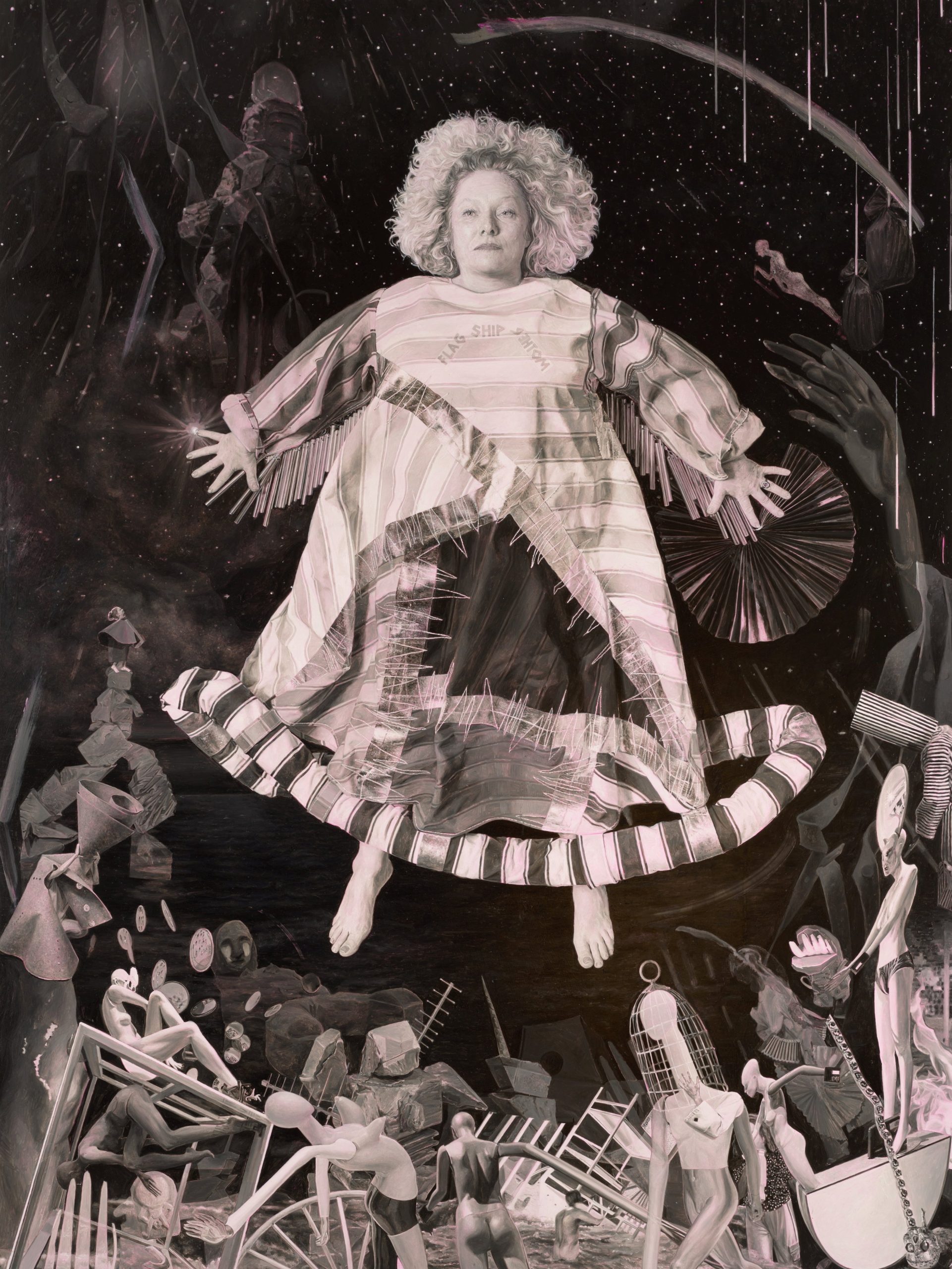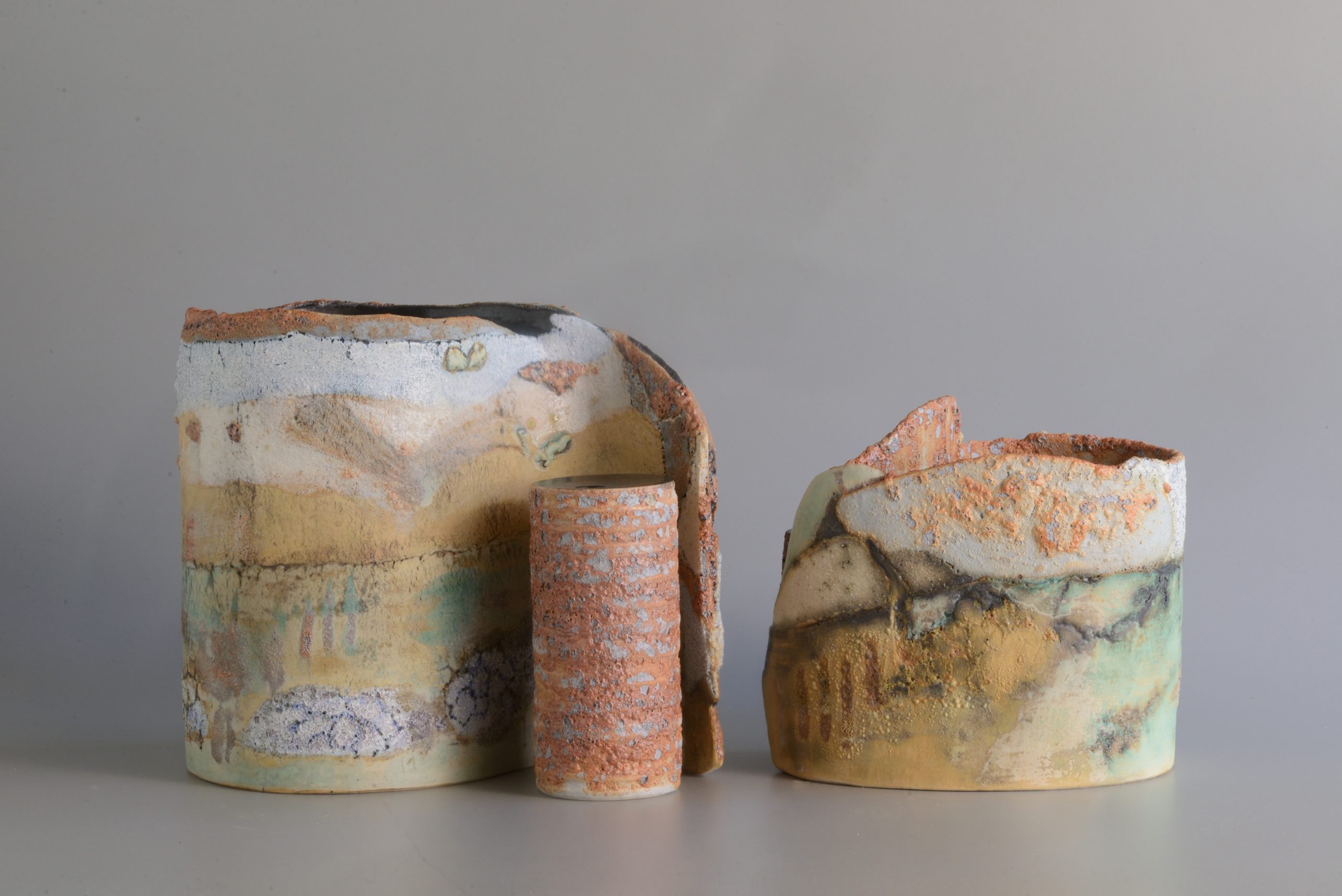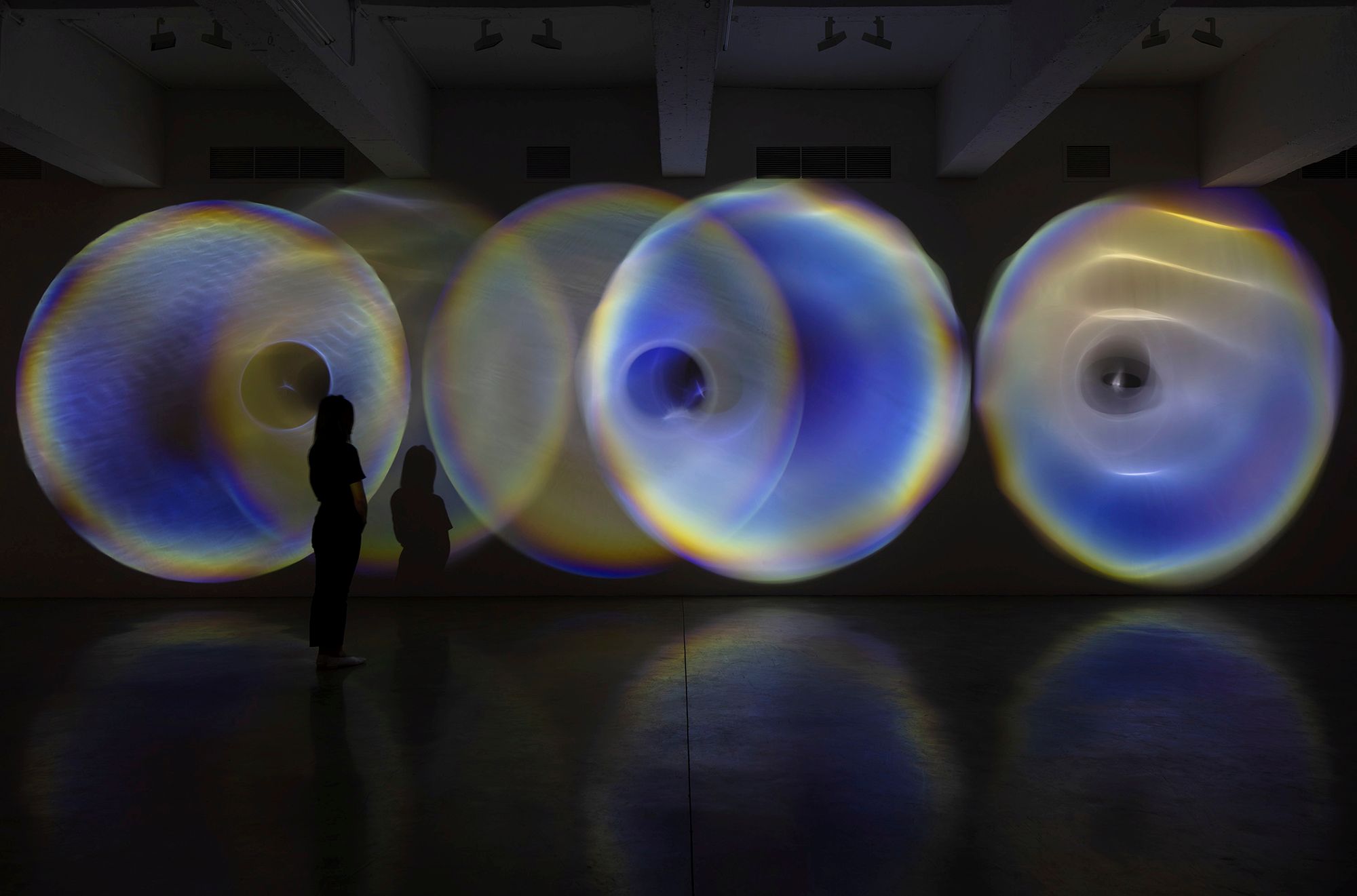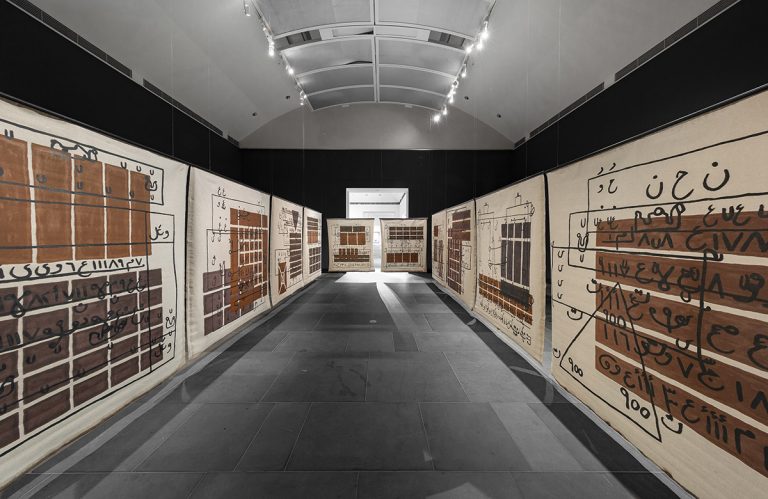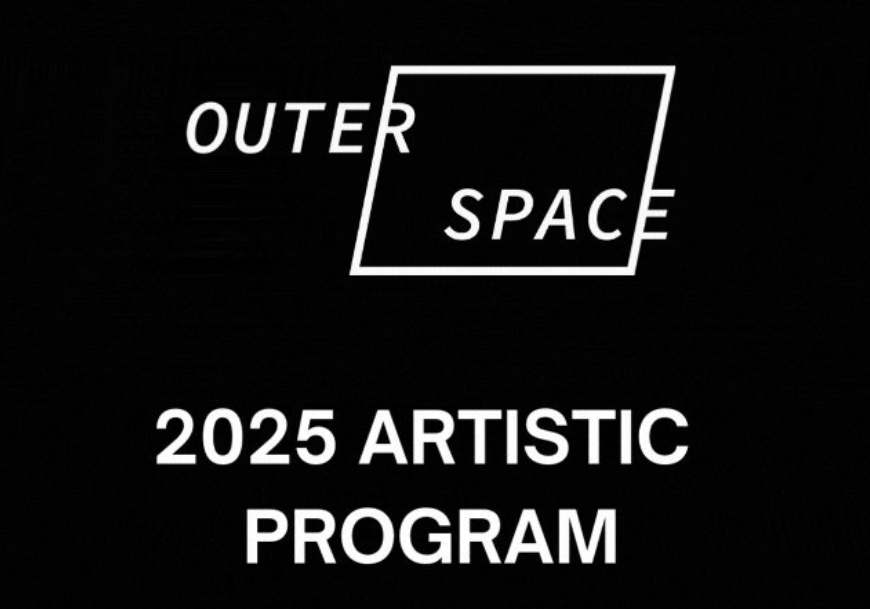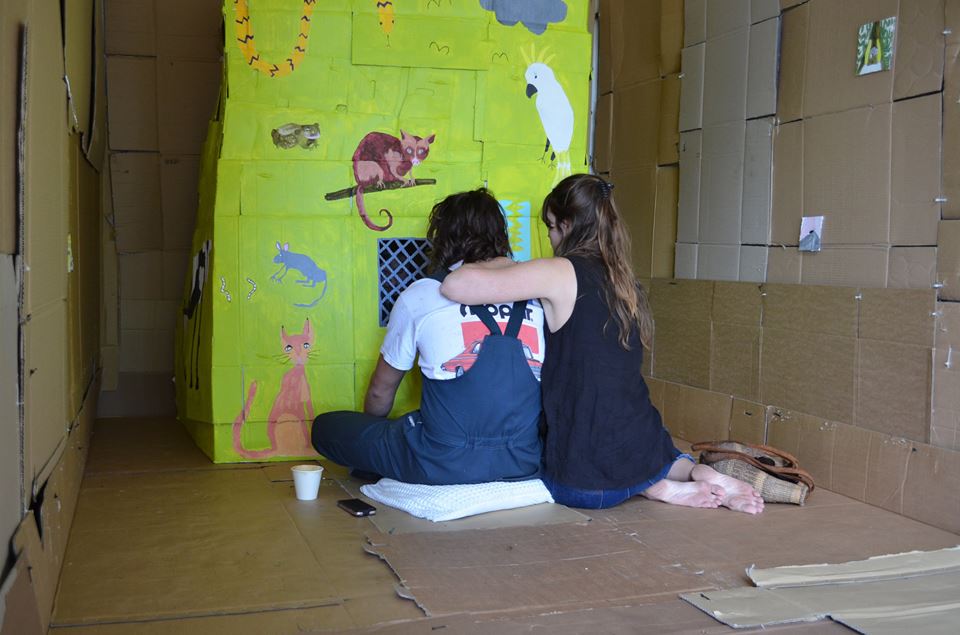
Dog Day Afternoon
I spent a mid-July weekend skirting around Sally Molloy’s show Memorial To All The Animals We’ve Ever Had To Kill. For two days Molloy took up residence in the back of a two-tonne truck, parked alongside Davies Park in West End, doors open, welcoming viewers inside. The truck is the physical gallery run by Clutch Collective ARI; the fixed but transient space cracks open the possibility of what an exhibition space can do. It feels perfect for Molloy’s show, a transformative and rolling collaboration.
The back of the truck was walled roughly with old cardboard packing boxes; at the end of the space was a cubby fashioned from a discarded fridge box, painted bright green and patterned with different animals. Replete with a cardboard grille, this was the confessional box that held Molloy on the ground inside. Viewers were invited to sit on the other side and confess their tales of animal murder; as they did she painted their story, an offering that was pinned on the truck’s walls.
Molloy’s interdisciplinary painting practice investigates the Australian landscape and examines colonial histories. A departure from her current research as a PhD candidate at Queensland College of Art, Molloy’s investigation of the theme of ‘misadventure on the land’ is what connects this show to her larger practice. The concurrent expressions of death, humour, and care sum up the show’s strengths: it was tongue in cheek and earnestly respectful at the same time.
The small acrylic paintings Molloy produced on the same crude cardboard as the walls were roughly the size of a coaster. They were tender and affecting in their naivety. Dynamic in colour, they were compositionally distinct and engaging. Many acted as vignettes for the viewer to decode. One painting, for instance, enigmatically revealed a fish bowl, with a clawed hand dipping into it. The face connected to the hand was truncated, but we can see a collared body. The cat’s defiant personality is suggested from the way the hand hangs with casual boldness. Some paintings were simple icons – a dog hovering in space on a white background. It was these paintings of dogs that punctured me. I visited the show on Sunday afternoon for the event publicised as a ‘memorial viewing’; Molloy was still taking confessions. I wrestled with confessing, but was somewhat relieved with the sinking sun, and the truck began being packed up. I was crushed with guilt over the accidental death of a beloved dog I lived with. Some participatory shows can impact just as effectively when we choose not to participate; the reason behind our decision lingers. I thought about my dog all night. I woke up the next morning with the show still on my mind to read a text message from my ex, sent just before midnight on that Sunday. I had forgotten, at least consciously, that the 16th of July was the anniversary of our dog’s death.
The spectrum of fauna depicted in the paintings revealed the audience’s desire for this kind of participation. We saw steak on a plate; swarms of mosquitos; ants crawling up a bed post. The range of movement between play and grief was bridged perfectly by the show’s essay, written by Molloy. It was her confession, simultaneously cool and warm; a lyrical and eloquent retelling of her experience of finishing off a ringtail joey that her dog had leapt on. Molloy is the ultimate absolver, riffing on tropes we know so well with a smile and genuine, complete care for our vulnerability.
The ephemeral nature of the paintings produced throughout the show, and the site of their construction, belie the reverberation of the show’s affect. I posted a selection of paintings that struck me on Instagram. One was an image of a dog; black and white and grinning against greenery and a blue sky. It almost looked like it was going off a cliff – transitioning somewhere, happily. A week later, a friend told me that painting was of her dog who had very recently been put down. My friend was moved by Molloy’s tender offering of forgiveness; creating a painting to hold the burden of guilt so that participants can let it go. I’m left with an image of Molly as high priestess, on the ground, in her cardboard church, intuitively giving, and taking, embodying the quiet power of art that is both collaboratory and self-reflective.
Written by Felicity Scarce
Written for the exhibition by Sally Molloy, Memorial To All The Animals We’ve Ever Had To Kill at Clutch Collective: Riverside Drive, West End, Brisbane (15-16 July 2017).

